#jerzy nowak
Explore tagged Tumblr posts
Text
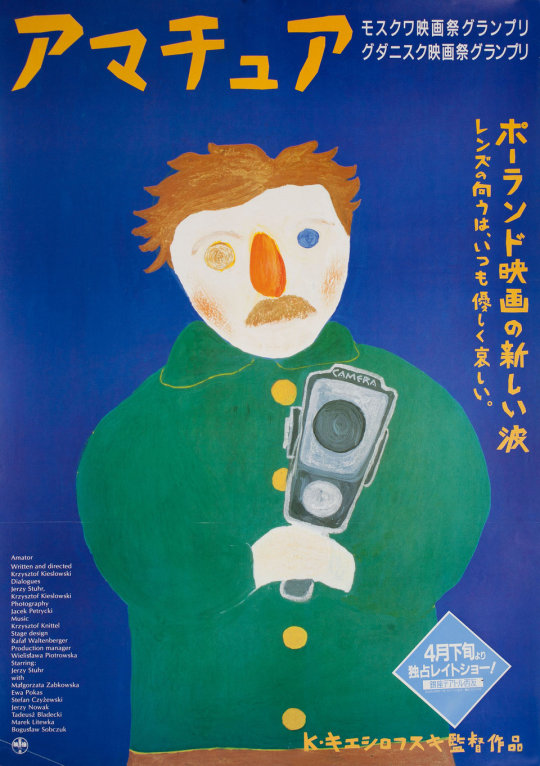

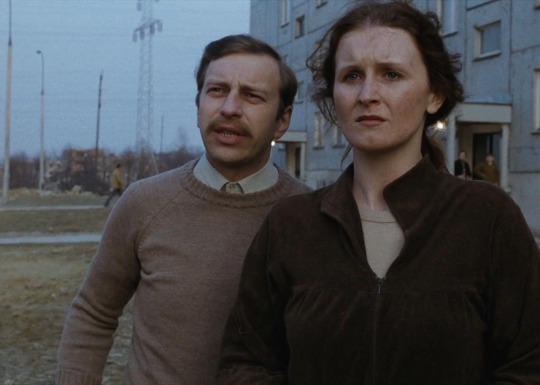
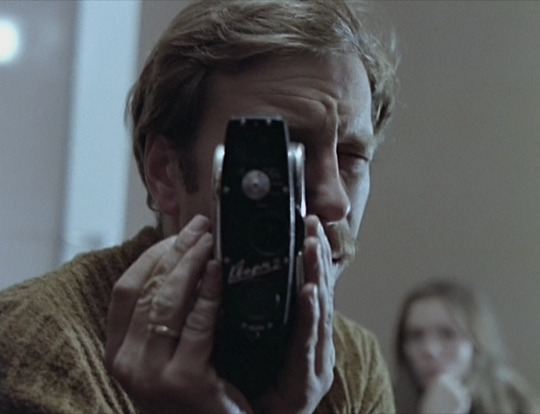
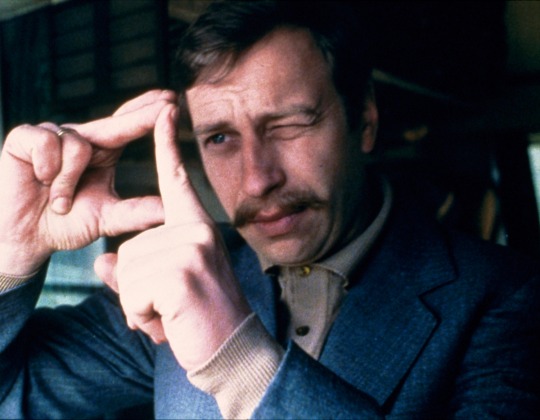
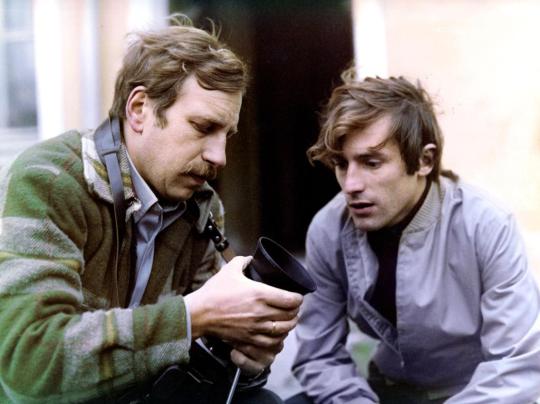
Camera Buff (Amator) (1979) Krzysztof Kieślowski
June 19th 2023
#camera buff#amator#1979#krzysztof kieślowski#jerzy stuhr#Malgorzata Zabkowska#Stefan Czyzewski#Tadeusz Bradecki#Jerzy Nowak#Ewa Pokas#Marek Litewka#Tadeusz Rzepka#Krzysztof Zanussi#Andrzej Jurga
11 notes
·
View notes
Text
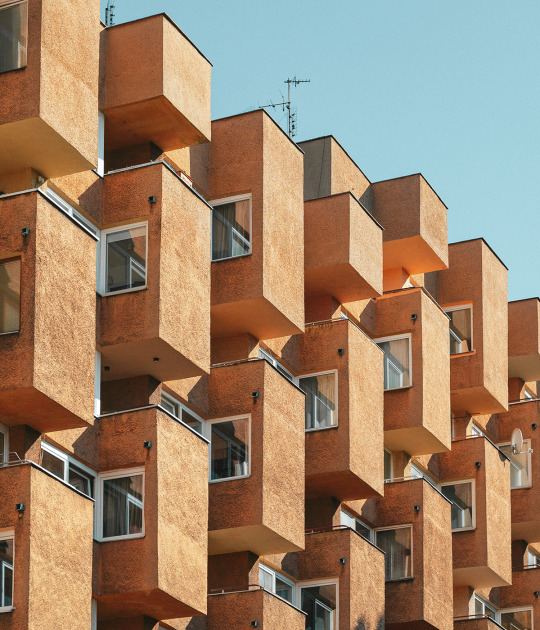
Karowa 18, Warsaw, Poland. Architects: Henryk Dąbrowski, Jerzy Kuźmienko, Janusz Nowak, Piotr Sembrat, Adam Snopka. Photo: Matthias Heiderich
182 notes
·
View notes
Photo

Dear friends , We are happy to announce that ”Socialist Modernism in Poland”, the sixth photo album/digital guide of @_BA_CU ‘s planned series, is available in 800 copies. Those who are interested in #SocialistModernism are able to order the book on 👉@UrbanicaGroup @ushopamazon distributor page, (Link in our profile☝️) ; link: https://urbanicagroup.ro/ushop/publications/album/socialist-modernism-book-socialist-modernism-in-poland-including-dhl-express-romanian-post-postage-in-eu/ or AMAZON: https://www.amazon.com/dp/6069509757?ref=myi_title_dp AMAZON Germany: https://www.amazon.de/dp/6069509757?ref=myi_title_dp by selecting the Photo album from among the books listed. (Shipping worldwide with DHL) #SocialistModernism #_BA_CU The photo album includes landmarks of socialist modernist architecture in Poland – from the 1950s to 1980s. Print run 800 Pages 192 +1 Spread/ POLAND-SOC MOD Map Polish and English Size 26×28.5 cm Weight 1.25 kg Designed and published by @_BA_CU Association 1 Apartment building on Karowa Street, Warsaw, Poland Built in 1978 Architects Henryk Dąbrowski, Jerzy Kuźmienko, Janusz Nowak, Piotr Sembrat, Adam Snopek. 2, 19 Housing complex "Polish Manhattan", Wroclaw, Poland. Built: 1968-1973. Architect: Jadwiga Hawrylak-Grabowska. 3 The "Przyjazn" Housing Estate 1976. Wroclaw, Poland Architect Witold Jerzy Molicki 5 Popowice development, Wrocław. Built in the ’70s. Architects: Witold Jerzy Molicki, Jan Tarczyński, B. Maga 7 Hotel Forum. Krakow, Poland, built between 1978-1989 Architect Janusz Ingarden. 9 Development on Grójecka 19-25, Warsaw, Poland. (detail) Built in 1961. Architects Jan Zdanowicz, Jerzy Baumiller. https://www.instagram.com/p/CqsMTfvsewx/?igshid=NGJjMDIxMWI=
7 notes
·
View notes
Text
Three Colors (Krzysztof Kieslowski, 1993, 1994)

Juliette Binoche in Three Colors: Blue (1993)
Cast: Juliette Binoche, Benoît Régent, Florence Pernel, Charlotte Véry, Hélène Vincent, Hugues Quester, Emmanuelle Riva. Screenplay: Krzysztof Kieslowski, Krzysztof Piesiewicz, Agnieszka Holland, Edward Zebrowski, Slawomir Idziak. Cinematography: Slawomir Idziak. Production design: Claude Lenoir. Film editing: Jacques Witta. Music: Zbigniew Preiser.
The extraordinary cinematography of Slawomir Idziak and the performance by Juliette Binoche carry this first film in the trilogy, which takes the three colors of the French flag as its unifying device. This time, liberté, the color signified by blue in the French tricolor, is the theme. Binoche plays Julie, who survives a car crash that kills her husband and daughter. Finding that she is unable to swallow the pills she obtains to commit suicide, she determines to live a completely detached life, doing nothing. Her husband, Patrice, was a famous composer, and Julie, also a composer, refuses to aid Olivier (Benoît Régent), her husband's sometime collaborator, in completing the concerto Patrice had been composing in celebration of the formation of the European Union. After sleeping with Olivier, Julie puts the estate she and her husband owned up for sale and tries to go into hiding, renting a small flat in Paris. But however much she tries to disengage herself from the world around her, Julie keeps being drawn back in. She refuses to sign a neighbor's petition to evict Lucille, a dancer in a strip club, thereby earning Lucille's gratitude. She is sought out by a boy who witnessed the fatal accident and wants to return a gold cross he found at the site and to tell her Patrice's last words -- the punch line to a joke he was telling when he lost control of the car. And she discovers that her husband had a mistress, who is carrying the child he didn't know he had conceived with her. All of this leads Julie to the realization that the liberty she had sought is illusory, that it can't be found in detachment but, to put it in terms of the tricolor, in conjunction with equality and fraternity -- treating Lucille as a equal, for example, and collaborating with Olivier to complete Patrice's concerto, which takes as text for its choral section the verses about love in 1 Corinthians. Visually beautiful with striking use of the titular color throughout, Blue has a romantic glossiness that takes away from the grit and urgency that it might have benefited from.

Julie Delpy in Three Colors: White (1994)
Cast: Zbigniew Zamachowski, Julie Delpy, Janusz Gajos, Jerzy Stuhr, Aleksander Bardini, Grzegorz Warchol, Cezary Harasimowicz, Jerzy Nowak, Jerzy Trela, Cezary Pazura. Screenplay: Krzysztof Kieslowski, Krzysztof Piesiewicz, Agnieszka Holland, Edward Zebrowski, Edward Klosinski. Cinematography: Edward Klosinski. Production design: Halina Dobrowolska, Claude Lenoir. Film editing: Urszula Lesiak. Music: Zbigniew Preisner.
The middle film of the trilogy is a dark comedy about an exiled Polish hairdresser, Karol Karol (Zbigniew Zamachowski), whose French wife, Dominique (Julie Delpy), divorces him because of his impotence. Still desperately in love with Dominique, Karol finds himself homeless, playing tunes on a comb and tissue paper to earn small change in the Métro. Another Pole hears Karol playing a Polish song and strikes up an acquaintance, eventually helping Karol smuggle himself back to Poland in a large suitcase, which is stolen before Karol can emerge from it. After being dumped in a landfill, Karol makes his way home to his brother's beauty parlor, and begins a long process of rehabilitation, in which he makes a fortune, and devises an elaborate plot that involves faking his own death, with which he eventually gets even with Dominique, though the revenge is bittersweet. The screenplay, written by Kieslowski with his usual collaborator, Krzysztof Piesewicz, is ingeniously put together, though the theme of égalité is not quite so central to White as the corresponding color themes are to Blue and Red. Zamachowski is impressive in his journey from victim to victor, but Delpy's role feels somewhat undeveloped. What could have attracted her to this schlub in the first place? As usual, there are some ingenious links between White and the other two films: Juliette Binoche's Julie can be glimpsed entering the courtroom where Karol and Dominique's divorce hearing is taking place, just as in Blue we caught a glimpse of Delpy and Zamachowski from Julie's point of view in the same setting.

Irène Jacob in Three Colors: Red (1994)
Cast: Irène Jacob, Jean-Louis Trintignant, Frédérique Feder, Jean-Pierre Lorit, Samuel Le Bihan, Elzbieta Jasinska, Roland Carey. Screenplay: Krzysztof Kieslowski, Krzysztof Piesiewicz, Agnieszka Holland, Edward Zebrowski, Edward Klosinski. Cinematography: Piotr Sobocinski. Production design: Claude Lenoir. Film editing: Jacques Witta. Music: Zbigniew Preisner.
Not only the last film in the trilogy, Red was also Kieslowski's final film before his death. He had announced his retirement after the release of the film, and died of complications from open-heart surgery in 1996. The film drew three Oscar nominations, for director, screenplay, and cinematography. It deserved one for Jean-Louis Trintignant's performance as Joseph Kern, a retired judge who spends his time electronically eavesdropping on his neighbors' phone calls. Irène Jacob plays Valentine, a model who encounters Kern when she accidentally hits his dog with her car. The two strike up an unusual friendship as the beautiful young woman draws the misanthropic judge out of his self-imposed exile, ironically by awakening his conscience and causing him to turn himself in to the authorities who convict him of invasion of privacy. In the tricolor scheme, red stands for fraternité, and the film delivers on the theme with Kern's emerging empathy. Again, the film links with its predecessors, both of which included scenes in which an elderly person, bent with age, struggles to force a plastic bottle into an aperture in a recycling bin. In Blue, Julie ignored and perhaps didn't even see the person's difficulty; Karol in Red notices but does nothing to help. Only Valentine sees and goes to the person's aid. But I find the ending of Red a little forced, in which the survivors of a disaster at sea include not only Valentine, but also Julie and Olivier from Blue, and Karol and Dominique, who have somehow reunited despite the ending of White.
2 notes
·
View notes
Video
Prof. Andrzej Nowak. Jerzy Sebastian Lubomirski - bohater, który podniós...
0 notes
Photo





Camera Buff (1979) dir. Krzysztof Kieślowski
#camera buff#amator#krzysztof kieślowski#jerzy stuhr#malgorzata zabkowska#ewa pokas#jerzy nowak#movieedit#filmedit#70s#film photography#cinema#cinematography#mine#screencaps
60 notes
·
View notes
Photo

Schindler’s List
1993. Historical Drama
By Steven Spielberg
Starring: Liam Neeson, Ben Kingsley, Ralph Fiennes, Caroline Goodall, Jonathan Sagall, Embeth Davidtz, Małgorzata Gebel, Mark Ivanir, Beatrice Macola, Andrzej Seweryn, Friedrich von Thun, Jerzy Nowak, Norbert Weisser, Anna Mucha...
Country: United States
Language: English
#Schindler’s List#Steven Spielberg#Liam Neeson#Ben Kingsley#Ralph Fiennes#Caroline Goodall#Jonathan Sagall#Embeth Davidtz#Małgorzata Gebel#Mark Ivanir#Beatrice Macola#Andrzej Seweryn#Friedrich von Thun#Jerzy Nowak#Norbert Weisser#Anna Mucha#United States#English#1993#90's#Historical Drama#History#Drama#1990's
2 notes
·
View notes
Photo










The Devil (1972)
#the devil#andrzej żuławski#diabel#leszek telezynski#wojciech pszoniak#jerzy zygmunt nowak#horror#talks
62 notes
·
View notes
Photo

#Trois couleurs: Blanc#Zbigniew Zamachowski#Julie Delpy#Janusz Gajos#Jerzy Stuhr#Grzegorz Warchol#Jerzy Nowak#Juliette Binoche#Krzysztof Kieslowski#BlauDust
1 note
·
View note
Photo

Dear friends , We are happy to announce that ”Socialist Modernism in Poland”, the sixth photo album/digital guide of @_BA_CU ‘s planned series, is available in 800 copies. The photo album includes landmarks of socialist modernist architecture in Poland – from the 1950s to 1980s. B.A.C.U. Association explains socialist modernist tendencies, it presents – in color photographs – a functional image of the buildings and their often original elements that synthesize local culture and traditions, while bringing you up to date with their current state of conservation. At the beginning of the book, a map shows the location of each of the buildings described. The 76 socialist modernist landmarks included in this volume have been organized by function, into five sections. The book contains the authors’ view on Poland modernist architecture. Print run 800 Pages 192 +1 Spread/ POLAND-SOC MOD Map Polish and English Size 26×28.5 cm Weight 1.25 kg Designed and published by @_BA_CU Association Those who are interested in #SocialistModernism are able to order the book on @UrbanicaGroup distributor page, (Link in our profile) ; link: http://urbanicagroup.ro/ushop/ or AMAZON: https://www.amazon.com/s?me=A33QJE9SPOCVM4&marketplaceID=ATVPDKIKX0DER by selecting the Photo album from among the books listed. (Shipping worldwide with DHL) #SocialistModernism #_BA_CU 1. Apartment building on Karowa Street, Warsaw, 1978 Architects Henryk Dąbrowski, Jerzy Kuźmienko, Janusz Nowak, Piotr Sembrat, Adam Snopek. 3 Sports Hall "Spodek", Katowice, 1964-71 Architects Maciej Gintowt, Maciej Krasiński, Jerzy Hryniewiecki 5 Exhibition Pavillon Cracow. (Bunker of Arts) Krakow, 1965. Architect Krystyna Tołłoczko-Różyska 7 Housing building, (facade detail) ul. Grabiszyńska, 133-35, Wrocław,the 60s Architect: Stefan Müller. 9 Former furniture store pavilion “Emilia”, Warsaw, Poland, (1960-1970) Demolished in 2017 Architect: Marian Kuźniar and Czesław Wegner 2 Kino Kijow (Kiev Cinema) Krakow, 1960-65, Architect: Witold Cęckiewicz 10 “Jubilat” Trade House Al. Krasińskiego 1, Krakow, Poland, 1959-1969 Architect: Jadwiga Sanicka (c) BACU https://www.instagram.com/p/CWLr71HI2vW/?utm_medium=tumblr
12 notes
·
View notes
Text

Karowa 18a, Warsaw. Architects: Henryk Dąbrowski, Jerzy Kuźmienko, Janusz Nowak, Piotr Sembrat, Adam Snopek. Photo: Matthias Heiderich
318 notes
·
View notes
Photo

Ewa Krzyzewska and Zbigniew Cybulski in Ashes and Diamonds (Andrzej Wajda, 1958) Cast: Zbigniew Cybulski, Ewa Krzyzewska, Waclaw Zaztrzezynski, Adam Pawlikowski, Bogumil Kobiela, Jan Ciecierski. Screenplay: Jerzy Andrzejewski, Andrzej Wajda, based on a novel by Jerzy Andrzejewski. Cinematography: Jerzy Wójcik. Production design: Roman Mann. Film editing: Halina Nawrocka. Music: Filip Nowak. The plot of Ashes and Diamonds is simple: A group of men carry out an ambush on a road in the countryside only to discover that their intended target was not among the men they killed. So they return to town to plot another way of assassinating the man. The youngest, most volatile member of the group discovers that the man has taken the room next door in the hotel, but while waiting for his opportunity, his flirtation with a pretty young woman turns serious -- they begin to fall in love. Still, renouncing that chance at happiness, he follows through with his mission: He kills the man, but before he can make his escape from the town he is gunned down. It could have been -- probably has been -- the plot of a Western, a gangster film, a spy thriller, or a war movie. But because it's a film made in Poland during the Cold War, and the story it tells is set on the very day in 1945 when the Germans surrendered, it's an intensely political film, not just in what's on the screen but also in what went on while it was being made and released. I mention this because while I want to think about movies in purely aesthetic terms -- i.e., assessing the quality of acting, writing, direction, camerawork, etc. -- it's almost impossible to approach a film like Ashes and Diamonds without taking so-called "external" factors like politics and history into consideration. If you try to watch it without knowing anything about the political situation in Poland in 1945, with the Germans retreating, the Soviets advancing, you'll miss half of the motivation of the characters and most of the intensity of the conflict. And if you disregard the fact that Poland in 1958 was a communist country, you can't understand why the plot to kill a communist leader was such a touchy subject for Andrzej Wajda to handle in a film -- and why the way he handled it was so audacious. It's a film that asks you to do your homework. On as pure an aesthetic level as I can get in thinking about the film, it's visually fascinating, with some splendid deep-focus cinematography by Jerzy Wójcik that pays homage to Gregg Toland's work on Citizen Kane (Orson Welles, 1941). Wajda was quite open about the influence of Welles on his filmmaking -- like Welles, Wajda wanted sets to have ceilings -- but he also expressed a love of American gangster movies and film noir, citing Scarface (Howard Hawks, 1932) and The Asphalt Jungle (John Huston, 1950) among his inspirations for Ashes and Diamonds. The American influence is probably most felt by viewers today in the performance of Zbigniew Cybulski in the role of Maciek, the young assassin. It's a showy, jittery, almost over-the-top performance that validates Cybulski's reputation as "the Polish James Dean." Wajda initially resisted casting Cybulski, wanting a more traditional actor for the role, but once Jerzy Andrzejewski, his co-screenwriter and author of the novel on which the film was based, persuaded him to hire Cybulski, Wajda realized that the handsome young star would attract the younger audience the film not only needed to succeed, but also to educate this audience about their country's past. He even gave in to Cybulski's demand that he be allowed to supply his own wardrobe -- not at all the kind of clothes that a young Polish partisan would have worn in 1945 -- including his signature sunglasses. (A line was inserted to explain that Maciek wore them because he had damaged his eyesight by spending too much time in the sewers of Warsaw during the uprising of 1944.) But Wajda added some idiosyncratic touches of his own to the film, including the bullets setting fire to the jacket of one of the unintended victims of the ambush, and some ventures into symbolism like the upside-down crucifix that looms over Maciek and Krystyna (Ewa Krzyzewska) when they visit a ruined church and the white horse that wanders the streets of the town near the film's end. Maciek is shot in a field where white sheets are drying on clotheslines, and when he clutches one of the sheets to himself, his blood shows through -- even though the film is in black and white, this is a reminder that the colors of the Polish flag, like the one the hotel keeper takes out to wave at the film's end, are white and red. Wajda also delighted in the ambiguity of Maciek's death scene, one of Cybulski's most extravagant moments, which takes place on a garbage heap. For the communist censors, he observed, this could be interpreted as the fate of rebels against their rule, while young would-be rebels could see it as the state treating them as garbage.
6 notes
·
View notes
Video
Prof. Andrzej Nowak. Jerzy Sebastian Lubomirski - bohater, który podniós...
0 notes
Text
Cracow Art Week KRAKERS 2020: Sztuka pojęcie otwarte
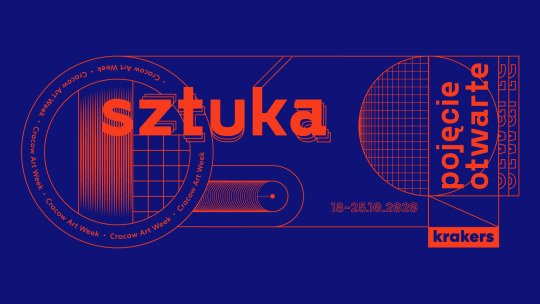
18 - 25.10.2020
PROGRAM GŁÓWNY
Wystawy (jeśli nie ma osobnego opisu) dostępne w godzinach: 16.00 – 18.00 poniedziałek 19.10. – piątek 23.10. 11.00 – 18.00 sobota 24.10. – niedziela 25.10.
SEKCJA MIASTO
Apteka Janicki Gallery Crash test, Alek Janicki, Formacja HiQ, Antoni Gralak
Art Agenda Nova Wszyscy jesteśmy terroryst(k)ami, Łukasz Surowiec
ARTzona Ośrodka Kultury im. C. K. Norwida ARTYSTA / ARTYSTKA NA CO DZIEŃ, Marek Basiul, Dominika Bobulska, Michał Bratko, Grażyna Brylewska, Marek Chlanda, Stanisław Cholewa, Beata Długosz, Agnieszka Dutka, Robert Kuśmirowski, Maria Kwiecińska, Agnieszka Łukaszewska, Krzysztof Marchlak, Małgorzata Markiewicz, Michał Misiak, Marta Niedbał, Małgorzata Niespodziewana-Rados, Kinga Nowak, Ernest Ogórek, Alicja Panasiewicz, Adam Panasiewicz, Jakub Pierzchała, Barbara Pilch, Anna Sadowska, Wioletta Sowa, Piotr Tołoczko, Małgorzata Wielek-M, Wojciech Wierzbicki, Olga Ząbroń
BIELEC Art, Dom Fotografii i Malarstwa, Galeria Sztuki i Studio Fotograficzne BIELEC Art – 120 lat rodzinnej tradycji fotograficznej
Cafe Dym Nowe gry barwne. Prace na papierze, Magdalena Kraszewska
Cricoteka Pierwszy Zmysł, Anna Barańska, Małgorzata Gorzelewska-Namiota, Marta Koguc, Zuzanna Łapka, Aneta Misiaszek, Jolanta Nowaczyk, Martyna Pinkowska, Hanna Rozpara, Martyna Rzepecka, Elwira Sztetner, Olga Ząbroń
CSW Wiewiórka Performatywny koncert pt. „Muzyka dla Ducha”, Big Band Drożdżowe Bąbelki w składzie: Piotr Lutyński – skrzypce, Kacper Iwo Matuszewski – perkusja, Grzegorz Kossowski – gitara elektryczna, Fryderyk Lutyński – gitara elektryczna, piano, Radost Stephanides – ukulele, Adam rzepecki, Murzyn – gitara Basowa, Bartolomeo Koczenasz – vj
Elementarz dla mieszkańców miast Two ribbons engaged in an aerial combat, Maria Loboda
Wydział Intermediów ASP & Elementarz dla mieszkańców miast Michał Łukasz | Anomalia, Michał Łukasz, Anomalia
Wydział Sztuki w Mieście 2020 Węzły. Wiedze niekonwencjonalne, Iza Szostak, Tomasz Węgorzewski, Maciej Szczęśniak, Sara Piotrowska wraz z goścmi – Magdaleną Lazar, Marysią Lewandowską (Women’s Audio Archive), Jasminą Metwaly, Jakubem Słomkowskim, Wiolettą Sową, Karoliną Szafran i innymi
F.A.I.T Otwórz usta, puść mi oczko, Katarzyna Olma, Joanna Tochman, Krzysztof Grzybacz
FRESZ GALLERY Wszystko i nic więcej, Kinga Popiela
GALERIA 2 OKNA MUSZTARDA PRZED OBIADEM – PAKIET KORZYŚCI, Pińczyńska Magdalena, Jurkowska Magdalena, Ochman Patrycja, Ochman Paulina, Westrych Tomasz, Sarnat Łukasz, Kapela Wojciech, Wójcik Tomasz, Braun Marek, Szumiec Paweł, Wojtaś Krzysztof, Michał Zakrzewski
Galeria ASP w Krakowie, Galeria Promocyjna Czas i piana Wystawa zbiorowa 30 artystów związanych z ASP w Krakowie.
Galeria Baszta, Centrum Kultury Dworek Białoprądnicki Astral Data Transmission, Aleksandra Liput
Galeria Domu Norymberskiego Lady Dada, Lena Berg (NO), Nadia Bournoville (SE/DE), Abigail Child (USA), Daniel Cojocaru (RO/DE), Zuzanna Janin, Bartek Jarmoliński, Monika Mausolf, Kaja Pilch, Bianka Rolando, Sarah Schönfeld (DE), Magdalena Zając
Galeria Dyląg Wydobyty. Marian Ozimek – prace na papierze z lat 50., Marian Ozimek
Galeria Dystans Na krawędzi, Dorota Goczał
Galeria i! Ferrofluctuations 2.0. Franciszek Araszkiewicz, Beata Malinowska-Petelenz
Galeria Kolekcjoner Wieloformy, Piotr Pasiewicz
Galeria Off-Frame TA | Ewa Kulka, Ewa Kulka
Galeria Off-Frame Mitologie, Agnieszka Bartak-Lisikiewicz
Galeria Olympia SSSSSS, Tomek Baran, Jagoda Dobecka, Maria Gogola, Krzysztof Grzybacz, Bartek Jurek, Tosia Kiliś, Ola Korzelska, Maja Krysiak-Podsiadlik, Julia Kwatro, Sara Piotrowska, Łukasz Podgórni, Marta Sala, Wojtek Stępień, Maciek Szczęśniak, Wiktoria Walendzik
Galeria Pryzmat siwek2siwek Granica czasu. Nowa wizja społeczeństwa w oparciu o sztukę dwóch pokoleń artystów: ojca i córki, Iwona Siwek – Front
Galeria Trzecie Oko Lofoty – Moje powroty, Andrzej Rolka, Kai Rolka
Galeria Wydziału Malarstwa ASP w Krakowie PSY, Piotr Bujak, Artur „Gepas” Gierlich, Bogumił Książek, Edward Linde-Lubaszenko (jako gość specjalny), Mikołaj Małek, Andrzej Pilichowski-Ragno, Michał Sroka, Dominik Stanisławski, Łukasz Surowiec, Grzegorz Sztwiertnia, Łukasz Trzciński, Tomasz Wlaźlak
Galeria Zalubowski Recykling opowiadań bez puenty, Magdalena Daniec
Hotel Cracovia Vistula is burning, Wystawa międzynarodowa w ramach projektu „Nature is my Homeland”, Zuza Banasińska, Lea Gudrich, Johannes Vogl, Mario Kolaric, Emilija Radojičić, Luka Cvetković, Tijana Petrović, Davor Gromilović, Michalina Bigaj, Katarzyna Skrobiszewska, Magdalena Lazar
Jak Zapomnieć Chałwa Wielkiej Polsce, Arek Dec, Karolina Jarzębak, Tomek Nowak
Jan Fejkiel Gallery Wzmożona obserwacja, Monika Szydłowska
Nasz Ogródek Nasz Ogródek Odsłona 4, Bogusław Bachorczyk, Bartosz Czarnecki, Karolina Jabłońska, Marcin Janusz, Jerzy Kosałka, Magdalena Kościsz, Tomasz Kręcicki, Katarzyna Kukuła, Agata Kus, Bartek Leśniak, Krzysztof Maniak, Aleksandra Młynarczyk-Gemza, Joanna Rolicka, Filip Rybkowski, Adam Rzepecki, Justyna Smoleń, Michał Sroka, Radosław Szlęzak, Przemysław Wideł, Małgorzata Wielek-Mandrela, Monika Drożyńska, Ewelina Gumienna, Władysław Markowski, Paweł Matyszewski, Thomas May, Gosia Mirga, Ewa Pasternak-Kapera, Michał Sosna, Wojciech Zasadni, Bettina Bereś, Piotr Kowalski, Maja Krysiak-Podsiadnik, Małgorzata Markiewicz, Paulina Ołowska, Kamil Sosin, Konrad Żukowski
OPCJA Galeria Wydziału Intermediów ADHEZJA, Ernest Borowski, Zuzanna Bodzoń, Estera Gałuszka, Aleksandra Huk, Michał Menkarski, Dominik Setlak, Mateusz Stanuszek
Pamoja Goods Vivien Poly „Jathilan” oraz praca grupowa „Remedy”, Vivien Poly oraz Ania Batko i Kola Śliwinska, Dobrawa Borkała, Przemek Branas, Agnieszka Brzeżańska, Ewa Ciepielewska, Iza Koczanowska, Diana Lelonek, Maria Łoboda, Małgorzata Markiewicz, Krzysztof Mężyk, Bianka Rolando, Łukasz Stokłosa, Stach Szumski, Iwan Wijono, Paulina Włostowska i Michał Szuwar, Natalia Załuska, Adam Gruba
PAON Lustereczko…, No_Poc_No_Chat
Potencja Nightwatching, Joanna Fluder, Ksenia Gryckiewicz, Karolina Jabłońska, Kamil Kukla, Dominika Olszowy
Pracownia Otwarta 25 lat malarstwa w Otwartej Pracowni, Ignacy Czwartos, Jacek Dłużewski, Wojciech Głogowski, Piotr Jargusz, Koji Kamoji, Krzysztof Klimek, Lech Kolasiński, Juliusz Kosin, Dariusz Mlącki, Olga Pawłowska, Beata Stankiewicz, Sławomir Toman
Pracownia Petera Bogatki Spotkania w pracowni Petera Bogatki
Raven Czar Sławy, Jerzy Tyburski
Shefter Gallery Green Pleasure, Natalia Kopytko, Krzysztof Marchlak, Małgorzata Wielek-M
Shefter Gallery Golden Years: Are You Ready?, Dawid Czycz
Skład Solny Zdrojowisko, Agata Kadenacy, Stanisław Koba, Diana Dyjak Montes de Oca, Bartolomeo Koczenasz, Marco Migliorisi, Maria Wasilewska, Andrzej Wasilewski
Szafirowa Pracownia St. Wyspiańskiego Świat-ły, Jakub Pierzchała, Maria Pyrlik, Adam Panasiewicz, Alicja Panasiewicz
UFO Art Gallery ENTROPY, Maria Ciborowska, Marcin Dymek, Radim Koros, Krzysztof Marchlak, Grzegorz Siembida, Marta Antoniak, Julius Reichel
Widna Znowu jedna z tych cholernych bestii, Bezimienny
Zofia Weiss Gallery VR Galeria – Muzeum Młodych z Krakowskiej Akademii, Weronika Adamska, Damian Bąk, Sylwia Brzyszczyk, Magdalena Chmielek, Joanna Kałdan, Dariusz Milczarek, Miroslav Mlkvik, Oliwia Smoleń, Anna Tajak, Agnieszka Wielewska
ZPAF Galeria TWOONE NEXT, Grzegorz Zygier
SEKCJA LABORATORIUM
Galeria Floriańska 22 Biologiczna Strefa Zgniotu, Betina Bożek, Grzegorz Bugaj, Zofia Hyje,k Kamil Kukla, Pierre Matsas, Julia Siuda, Weronika Szwarnóg, Dariusz Vasina, Bartosz Zaskórski, Piotr Zięba
Galeria Szaber Marek, tęsknimy za Tobą!, Ewelina Galla, Wiktoria Kieniksman, Mateusz Kordas, Michał Malinski, Sebastian Mikoś, Olha Synyshyn, Małgorzata Wowczak, Paweł Zięba, Jagoda Czarnowska
Galeria Szara Kamienica CELEBRITY, ArTVstka, Nikodem Baiser, Martyna Borowiecka, Karina Gorzkowska, Justyna Górowska, Krzysztof Grzybacz, Zofia Krawiec, Edmund Krempiński, Jana Moroz, Katarzyna Olma, Maja Szerel, Joanna Tochman, Daniel_a Weiss, Konrad Żukowski
Jak Zapomnieć 2 Green Gay from Far Away, Arek Dec, Maja Gomulska, Karolina Jarzębak, Tomek Nowak, Gabriela Sułkowska + zaproszeni artyści
Kolektyw artystyczny I ALWAYS WANTED TO DO THIS, Natalia Kopytko, Bartek Węgrzyn, Tomasz Bugajski, Marcin Sipiora
Muzeum Farmacji Re-Kolekcje z Czarnym Zakładem w Muzeum Farmacji, Zuzanna Bartoszek, Kacper Bożek, Mariusz Czeżyk, Magda Hueckel, Robert Kuśmirowski, Krzysztof Marchlak, no_pic_no_chat, Aleksandra Waliszewska, Olga Winiarczyk, Mia Wróblewska,Natalia Kopytko, Czarny Zakład: Przemysław Wideł i Małgorzata Wielek-M
PAON Wystawa rolna | Imperium Ducha, Aleksandra Korzelska, Piotr Puldzian Płucienniczak, Łukasz Podgórni
Piotrowska / Szczęśniak Chorus, Sara Piotrowska, Maciej Szczęśniak, zaproszeni chórzyści
ZWROTNICA 𝔚𝔢𝔦𝔩 𝔰𝔦𝔠𝔥 𝔷𝔴𝔢𝔦 𝔎ö𝔫𝔦𝔤𝔦𝔫𝔫𝔢𝔫 𝔰𝔱𝔯𝔦𝔱𝔱𝔢𝔫, 𝔪𝔲𝔰𝔰𝔱𝔢𝔫 𝔳𝔦𝔢𝔩𝔢 ℌ𝔢𝔩𝔡𝔢𝔫 𝔰𝔱𝔢𝔯𝔟𝔢𝔫, ℨ𝔢𝔪𝔰𝔱𝔞 𝔅𝔯𝔲𝔫𝔥𝔦𝔩𝔡𝔶, Gabriela Rosenzweig
SEKCJA FRINGE
Fashion Startup Gallery | och koncept Aberracje, Patrycja Ochman-Tarka, Paulina Ochman
Galeria CONTENT ART Fleeting Glances / Ulotne Spojrzenia Zygmunt Kleszcz, Zygmunt Kleszcz
Galeria CONTENT ART FUSION Kamil Stańczak, Kamil Stańczak
GALERIA M37A PRZESTRZEŃ METAMORFOZY – projekt on line, Anna Sołtysik, Bartłomiej Domagała, Ewa Maria Romaniak
Kąt Kultury Vacancy, Patryk Czarkowski, Marta Kawiorska, Dariusz Milczarek, Jan Podgórski, Tomasz Prymon, Aleksandra Słowińska, Stanisław Słowiński, Kinga Trzepla, Joanna Warchoł, Bartłomiej Węgrzyn, Adam Wsiołkowski, Sebastian Wywiórski, Olga Ząbroń
Klub Alchemia DOT, Bożena Knecht
KREAKTYWNA #uczta, Kinga Burek, Joanna Kot, Aleksandra Kozuń, Natalia Maria Małecka, Klaudyna Masłowska, Mariia Mytrofanova, Piotr Mierzwa, Julia Podczerwińska, Marcin Szulc, TY – jako uczestnik
NAGA Gallery Wcielenie, Iwona Demko, Katarzyna Kukuła, Małgosia Rozenau, Śom,Wioletta Jania, Ksenia Gryckiewicz, Ola Młynarczyk Gemza, Agata Szymanek, Tyśka Samborska, Marysia Michoń, Majka Natalia, Kat Hanula, Sandra Bąk, Jagoda Woźny,Elżbieta Suchecka, Maja Krysiak
Momentum Gallery Mot/Her KC, FA KOLEKTYW – Anna Wańtuch, Filip Wańtuch
Mechanoff. Spokrewnieni, Weronika Poje, Konrad Miklaszewski
Sarego 10 Berlin calling, Angelika Wojas
Galeria Ciele-sny Ciele-sny, Natalia Spyrka, Danuta Turkiewicz, Karolina Korecka
Księgowość Polska Voyage with friends, Karolina Oczkowska, Dominika Śniegocka, Basia Karpiel, Anna Różycka, Mikołaj Bernsdorff, Radim Koros, Sabina Woźnica, Jan Kutryba, Dominika Wojtylak, Natalia Dziurny, Johannes Mundinger, Bartolomeo Koczenasz, Iryna Kot, Olek Rajewski, Spajder Jeruzalem, Jolanta Gmur, Michał Róg, Leona Iwańska, Aleksandra Wierzbińska, Jakub Tramecourt, Saren, Halina Mrożek, Mateusz Jote Morski, Raspazjan Someart, Marcin FRM Wierzchowski, Ramol, Maciej Klich, Szatiman, Izabela Kmieć, Marcin Rajewski, Dawid Wołek, Michał Bielawski, Magdalena Tryba, Weronika Wielecka, Shrooms i inni
Yegorov Gallery Prezentacja artystów galerii, Monika Chlebek, Krzysztof Grzybacz, Matúš Pius Niemiec, Beata Stankiewicz, Łukasz Stokłosa, Jan Eustachy Wolski, Konrad Żukowski
Galeria Sztuki Współczesnej Van Rij 3+1, Paweł Orłowski, Adam Bakalarz, Lubomir Tomaszewski, Erwina Ziomkowska
PROGRAM TOWARZYSZĄCY
WYDARZENIA TRWAJĄCE CAŁY KRAKERS 2020
Cricoteka | ul. Nadwiślańska 2-4, poziom -1 | wystawa Między-czas
Cricoteka | ul. Nadwiślańska 2-4, poziom 3 | wystawa Marek Chlanda Cargo
Muzeum Etnograficzne w Krakowie | pl. Wolnica 1 | TRANSmisje – zaproszenie do eksperymentu percepcyjno-interpretacyjnego
Muzeum Sztuki i Techniki Japońskiej Manggha, ul. M. Konopnickiej 26 | Galeria Europa – Daleki Wschód | wystawa Araki / Tsujimura. Na granicy cienia
Nowohuckie Centrum Kultury| al. Jana Pawła II 232 | Biała Galeria CENTRUM | Jubileuszowa wystawa malarstwa Małgorzaty Jagiełło
Nowohuckie Centrum Kultury | al. Jana Pawła II 232 | Czarna Galeria CENTRUM | Wystawa obiektów, fotografii Bogny Becker. Wystawie towarzyszy film biograficzny
Muzeum Sztuki i Techniki Japońskiej Manggha | ul. M. Konopnickiej 26 | wystawa Drzewek Bonsai
KRA 2020 Krakowskie Rezydencje Artystyczne 2020 | ul. Stefana Batorego 6a
Muzeum Krakowa | Kolekcja Otwarta działanie online | film
Muzeum Sztuki Współczesnej w Krakowie MOCAK | działanie online | konkurs, w ramach którego do wygrania będą publikacje MOCAK-u
MICET – Muzeum Starego Teatru | ul. Jagiellońska 1 | Projekt ZALUPOWANI – kolekcja w budowie (odsłona III)
INFLATALES. Stalowe opowieści Oskara Zięty | wystawa | Galeria Architektury GAGA – Małopolski Ogród Sztuki | ul. Rajska 12
Skład solny | ul. Na Zjeździe 8 | Polish Paradise | wystawa
18.10
Oprowadzanie po wystawach Kolekcji MOCAK-u z przewodniczką
Wystawy – „Stary Rzepecki patrzy na młodego Rzepeckiego” Adama Rzepeckiego i „Sprawę Stanisława Pyjasa” Doroty Nieznalskiej
20.10
Wojna o pisuar. Kto był autorem przełomowego dzie��a w sztuce XX wieku | dyskusja online
Spis rekwizytów: zabawy improwizowane na przedmiotach
21.10
Artcollecting: Rafał Kamecki
Spotkanie z zespołem kuratorskim towarzyszące wystawie “TA” Ewy Kulki
22.10
Magdalena Daniec Recykling opowiadań bez puenty | spotkanie i oprowadzanie z artystką
Magdalena Daniec Recykling opowiadań bez puenty | spotkanie i oprowadzanie z artystką
Iga Bałos. Wszystko widzę jako…prawo, czyli czy filmy o sztuce są o prawie? | wykład online
Spis rekwizytów: zabawy improwizowane na przedmiotach
23.10
4Seasons | Krakowskie Rezydencje Artystyczne 2020
Fałszerze i złodzieje | spacer dla dorosłych i młodzieży | live online
24.10
Nic z czegoś, czy coś z niczego? | Szymon Kobylarz | artist talk
Oprowadzanie muzyczne po wystawie Dawida Czycza „Golden Years: Are You Ready?”
EXTRA MUROS Józefina Chętko (Lou Cantor / Alfabet) & Piotrowska/Szczęśniak atelier moderuje Romuald Demidenko
Performance audiowizualny formacji Big Data Collective
25.10
Ufo na Kazimierzu. Spacer o muralach kazimierskich dla Dzieci z Rodzicami
Wszystko widzę jako sztukę | warsztaty dla dzieci 6-12 lat
Dom Norymberski | oprowadzanie kuratorskie
PROGRAM PARTNERSKI
Mandragora i ziemniaki:
Tomasz Kręcicki i Sebastian Tröger
Wernisaż 24 października 2020
3 notes
·
View notes

